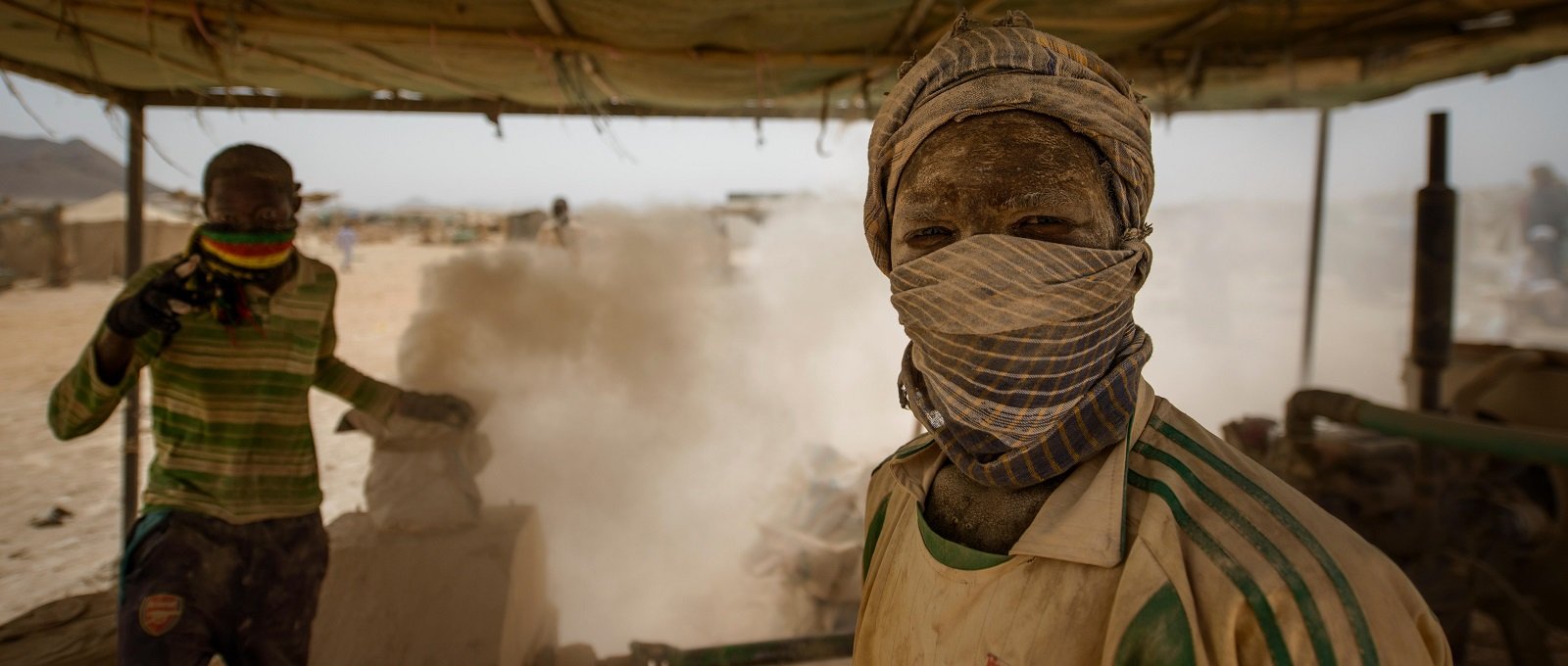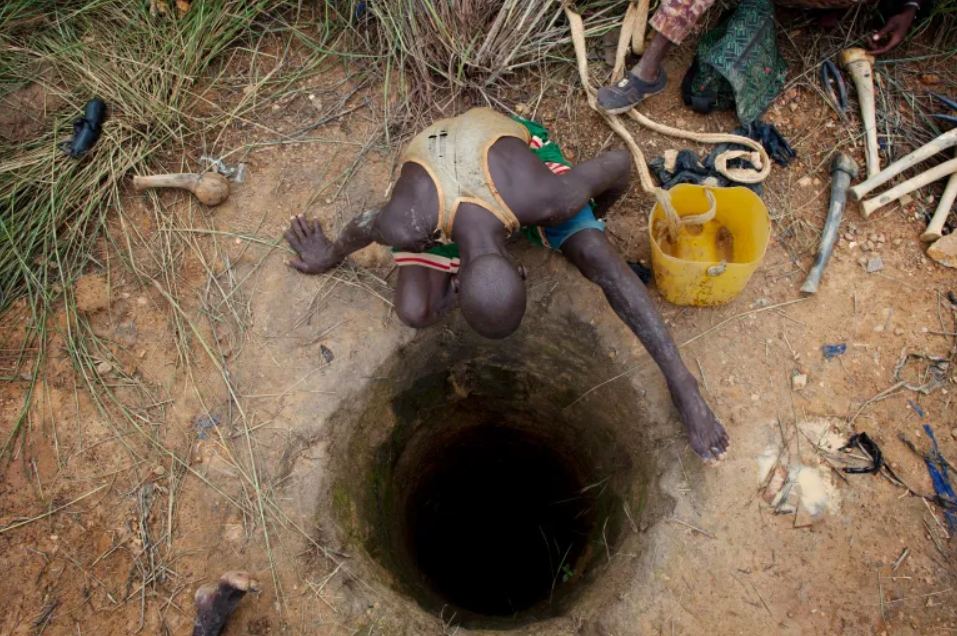Corruption and Rights Abuses Are Flourishing in Lithium Mining Across Africa, a New Report Finds
The global clean energy transition could be a game changer for Africa, but exploitation of miners continues as many foreign mining companies ignore local opposition.
On a Sunday afternoon in March 2023, Darlington Vito was shot in the head outside an industrial lithium mine in Masvingo Province, Zimbabwe.
A subsistence miner, he had been searching for chunks of ore in a rubble pile when a security guard at the mine site fired his weapon without warning, family members and local human rights activists said in interviews. Vito died a week later from his injuries.
For Vito and other locals living near the mine, the global lithium boom brought the promise of economic opportunity to the poverty-stricken region. Global demand for lithium, a lightweight metal used in electric vehicles, mobile phones and energy storage systems, is expected to increase fortyfold from 2020 to 2040, as the world moves away from fossil fuels and toward renewable sources of energy to mitigate climate change.
Some Zimbabweans have found formal employment at the country’s seven industrial-scale lithium mines, but thousands of others have flocked to informal mining sites where they use basic tools like picks and shovels to dig up chunks of lithium ore, which they then sell to traders who truck the ore across the border to South Africa for export and processing abroad.
While Zimbabwe’s president Emmerson Mnangagwa has said the lithium industry will buoy the nation’s flailing economy, watchdog groups and local communities say Zimbabweans have heard similar promises made about diamonds, gold and other resources, only to see the benefits accrue to wealthy elites while locals’ labor and ecosystems are exploited.
Zimbabwe made over $200 million in revenue from lithium in the first nine months of 2023. But economists have estimated that Zimbabwe lost roughly $12 billion from 1980 to 2012 through illegal trade and capital flight involving multinational businesses in the resource extraction industry. The nation’s national debt as of September 2022 was $14 billion.
A new report from the nonprofit Global Witness validates civil society groups’ concerns about exploitative labor practices and environmental destruction associated with lithium mining. The report, released Tuesday, identifies multiple alleged incidents of corruption, unsafe working conditions, forced evictions, child labor and harmful environmental practices tied to lithium mining in Zimbabwe, Namibia and the Democratic Republic of Congo.
“History is on course to repeat itself,” said Colin Robertson, a senior investigator at Global Witness and one of the report’s authors.
Family members of Vito, the man shot adjacent to the mine, told Inside Climate News that they are not aware of any formal investigation into the killing and that they lack the resources needed to pursue legal action against the mine’s foreign owner. No criminal charges have been filed. Earlier this year, the mine was forced to temporarily suspend operations related to alleged labor law violations and has faced allegations from civil society groups relating to its environmental record and treatment of local communities.
Corruption, Abuse and Displacement
The Global Witness report recounts local press reporting of illegal and unethical activities, some of which have hidden in plain sight.
In Namibia, the researchers relied on open source information, satellite imagery and public records to report that a Chinese mining company allegedly used a front company to acquire several small-scale licenses for less than $140 for a multi-million dollar industrial-scale open pit mine.
The lesser licenses allowed the company to skirt some environmental regulatory requirements, the report says.
Lawmakers and activists have levied accusations at the company for mistreating its Namibian workers, who are housed in squalid “apartheid” conditions separated from the lodging built for the company’s Chinese workers.
Similar allegations have been directed at lithium mining companies operating in Zimbabwe.
Neither the Namibian nor the Zimbabwean embassies in Washington D.C. immediately responded to requests for comment.
In November 2022, subsistence miners working in a lithium mine in Zimbabwe were forced to pay to join the “Zimbabwe Miners Federation,” a state-registered organization whose president is Henrietta Rushwaya, the report says. Rushwaya, who earlier this month was convicted of trying to smuggle gold worth over $300,000 out of the country, has ties to the ruling ZANU-PF party. Since ZMF obtained a license at the mine, subsistence miners operating there say they receive 75 percent less for the lithium ore they extract.
Farai Maguwu, director of Harari-based Centre for Natural Resource Governance, said families living near another mine in Zimbabwe were presented with contracts earlier this year whereby locals would agree to vacate their homes and relocate in exchange for roughly $1,900. Families were told that if they refused to sign the agreements, their homesteads would be destroyed and they would get nothing because the land belonged to a chief who had made a deal with the company.
“These are people who endured some of the worst atrocities imaginable fighting for this land, for independence, and now they’re being told, ‘this is not your land,’” Maguwu said, referring to the violent conflict that ended majority-white rule in the former colony of Rhodesia, leading to Zimbabwe’s independence in 1980.
Earlier this year, the U.S. nonprofit Oxfam America released its own report analyzing the policies of companies involved in the mining of materials critical to the clean-energy transition. Researchers looked at whether the mining companies had policies regarding “Free Prior and Informed Consent,” a human right recognized in various international and national laws that requires Indigenous and local communities be consulted about, and given the opportunity to approve or reject, projects that affect them.
The Oxfam researchers found that 29 of 43 companies they reviewed had public policies promising to respect human rights, while fewer had commitments addressing the Free Prior and Informed Consent rights of Indigenous and local communities. Nearly all companies with FPIC policies qualified them so that they could still move forward if consent of the community is not obtained. “Global climate action cannot be used to justify further harm and human rights abuses of Indigenous and local communities across the globe,” the Oxfam report said.
The authors of both the Oxfam and Global Witness reports called on companies, governments and investors to embed human rights and anti-corruption due diligence into their policies and laws, and to implement transparent and independent enforcement mechanisms and third-party monitoring.
Civil society groups and local communities have also called on governments in Africa to ensure the continent captures more of the economic benefits of its resource wealth. In the case of lithium extraction, that means building local processing facilities that can turn raw lithium ore into the more valuable chemical compounds used in batteries.
Currently, most downstream processing takes place in China, which mines about 30 percent of hard rock lithium worldwide and processes roughly 60 percent. Over the past year, both Namibia and Zimbabwe have passed legislation banning the export of unprocessed lithium ore in hopes of promoting investment in domestic processing facilities.
The Democratic Republic of Congo, too, has enacted an export ban on raw materials. The central African nation’s Manono area is home to one of the world’s largest lithium deposits, but operations there have been delayed due to a dispute between Australian and Chinese companies over rights to the mine.
Environmental Impacts
While seeing little economic benefit, communities living adjacent to the lithium mines reviewed in the Global Witness report are bearing the brunt of the ecological impacts from operations.
Lithium can be mined from salty marshes or from hard rock pegmatitic lithium ores or clays.
The African continent is rich in hard rock lithium, which is mined by clearing land, digging enormous open pits and using machinery or tools to extract the ore. The process is water-intensive and can cause terrestrial and aquatic pollution from chemicals used to extract the metal. Locals, who are largely reliant on subsistence agriculture, say operations affect their crops, scare off wildlife, cause extreme amounts of dust to envelop their homes and emit excessive noise.
These impacts, and the communities they fall upon, are at the heart of a gross paradox of the global energy transition, Maguwu said, as countries that have produced little in the way of greenhouse gases warming the planet bear a disproportionate burden of the ills of lithium mining. Absent colossal shifts in the consumption patterns of wealthy economies, vast amounts of lithium and other materials are needed to rapidly deploy clean energy technologies needed to avert the worst impacts of climate change.
People living in places like Zimbabwe, the Democratic Republic of Congo and Namibia have contributed the least amount of the greenhouse gas emissions driving climate change, and they are also the most affected by the impacts of a warming planet, like more severe droughts and intense storms.
“We are paying heavily for climate change and even more through more mining to address climate change; it’s simply shocking.” Maguwu said. “We are paying twice for a crime that we never committed.”










